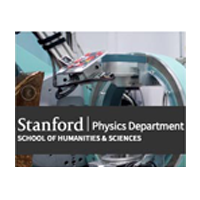Image

Applied Physics/Physics Colloquium: IXPE: Our First Look Around the X-ray Polarized Sky
Summary
Roger W. Romani (Stanford Dept. of Physics / KIPAC)
Hewlett Teaching Center, Rm. 201
Refreshments served in the courtyard between Varian and PAB at 4:30 p.m.
Hewlett Teaching Center, Rm. 201
Refreshments served in the courtyard between Varian and PAB at 4:30 p.m.
Feb
7
Date(s)
Content
For 50 years, the only astronomical source with measured soft X-ray polarization was the Crab nebula, initially detected with sounding rockets. Now we finally have the Imaging X-ray Polarimetry Explorer mission on orbit, which has already measured complex X-ray polarization signals from dozens of neutron star and black hole sources, with over 100x the sensitivity of the initial experiments. I summarize the motivation for such polarization studies, the technology advances that made IXPE possible, and some exciting results from our first year's program. As the wider community gets involved, additional novel probes of high energy astrophysical sources are expected soon.